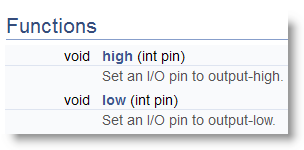Propeller C Reference
About Propeller C
PropellerGCC is an open-source C/C++ compiler for the Propeller P8X32A multicore microcontroller. It is an ANSI-C C89 and C99 compliant with
very few exceptions. Its libraries include propeller.h (which also includes cog.h) to accomodate the multicore Propeller architecture, as well as many Standard C Libraries; the complete library reference is
available here.
Since some standard libraries (such as stdio.h) are very large, the Propeller C Learning System includes custom non-standard Simple Libraries (see below) that use far less memory and also provide features to support microcontroller I/O tasks. See the
PropellerGCC Documentation for more information about PropellerGCC and memory usage.
 SimpleIDE User Guide
SimpleIDE User Guide
SimpleIDE is the programming software for the Propeller C Tutorials.
Download the SimpleIDE User Guide
 Simple Libraries
Simple Libraries
Simple Libraries are designed by the Parallax Education Team especially for the Propeller C Tutorials series. They are included in the Learn folder distributed with the SimpleIDE software, and with every interim Learn folder update. See the "Stay Current!" box on the upper right for the latest versions.
Simple Libraries Documentation on your Computer
- Go to Documents > SimpleIDE > Learn, and open Simple Libraries Index.html
- Or, in SimpleIDE, choose Help > Simple Library Reference
Simple Libraries Documentation Online
Propeller C Tutorial Archive
The
Propeller C Tutorial Archive contains previous versions of the tutorials, and links to the corresponding Learn folder (with Simple Libraries and Example Code) as well as the compatible version of the SimpleIDE software.
 SimpleIDE User Guide
SimpleIDE User Guide Simple Libraries
Simple Libraries